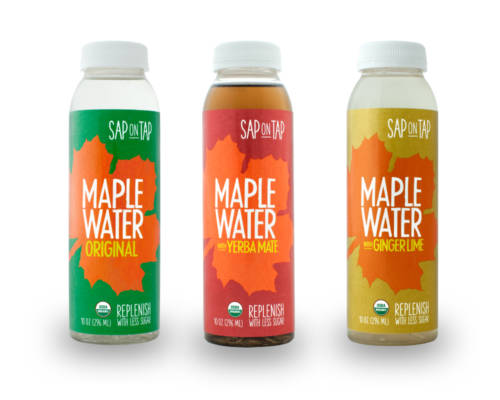You’ve Heard of Coconut Water, But Maple Water?
A lot of people are familiar with the hydrating properties of coconut as popularized by the ever-trendy coconut water that is now available in every juice bar across the country, but a new company called Sap on Tap is tauting the rehydration properties of a new elixir called “maple water”.
Maple water is tapped from the sap of sugar maple trees, and the result is a refreshing, slightly-sweet flavored drink. Though maple syrup is a breakfast staple, maple water is lesser known, but with health benefits and delightful taste that makes it great alternative to artificially-flavored drinks (and with a different flavor profile, for those who are sick of coconut water…).
GC met with the Sap on Tap team last week to hear about their company, the story behind Sap on Tap, and how, exactly, they harvest their “maple water”.
GC: Tell us how the idea for ‘Sap on Tap’ came about.
SOT: I have worked with natural and organic food and beverages for the last 20 years, and when I heard of the concept of maple water it just made a tremendous amount of sense from many angles. Maple water provides natural hydration and is minimally processed. It has inherent health benefits: it’s high in Manganese and promotes skin and bone health. It also tastes great with very little calories, as is non-GMO. We bought some from a tree farm in Upstate New York, and we thought it tasted great, with lots of potential and applications.
GC: How would you describe what maple water to someone who has never tried it?
SOT: Maple water can be confusing because most people think it’s sap. Pine sap is really sticky stuff, but maple sap has the consistency of water.
As the sap travels from the tree’s roots, it is filtered and accumulates minerals like Manganese. So basically, it’s water filtered by the maple tree [which takes on the flavor of maple in the process]. Maple syrup, on the other hand, is actually a boiled down, highly concentrated version of maple water. It takes 30 gallons of maple water to make one gallon of maple syrup.
GC: Where do you source your maple water?
SOT: We buy our maple water from organic certified maple tree farms in upstate New York.
GC: How do you harvest maple water?
SOT: Maple water is a very simple product, but it’s a little complicated from the supply side. There are only a few weeks a year when you have cold enough nights and warm enough days for the sap in sugar maple to run. You can then either process it all using very high heat, which allows it to keep a shelf life of up to a year. What we’ve done to avoid the process of high heat is to freeze the maple water after we collect it. We thaw it as we need so that we can make a fresh batch weekly.
GC: What do you find most exciting about Sap on Tap?
SOT: It’s exciting to have a product that is totally in tune with the environment and sustainable. We are not cutting down trees or even growing crops, we are just tapping trees that are in the forest already. Because we only need to ship from upstate New York not internationally, our carbon footprint is very low. It’s also exciting that maple water has very little sugar, probably the lowest of any healthy beverage I know. I replace it with my morning water, because for the added flavor it helps me stay hydrated throughout the day.




































